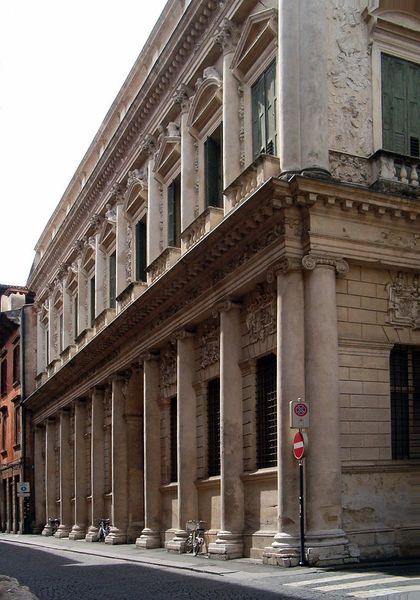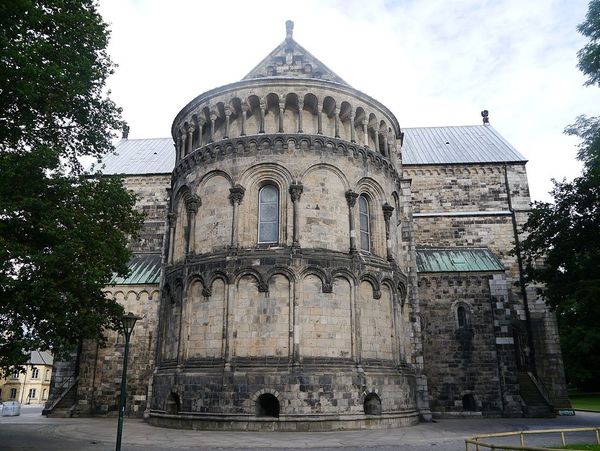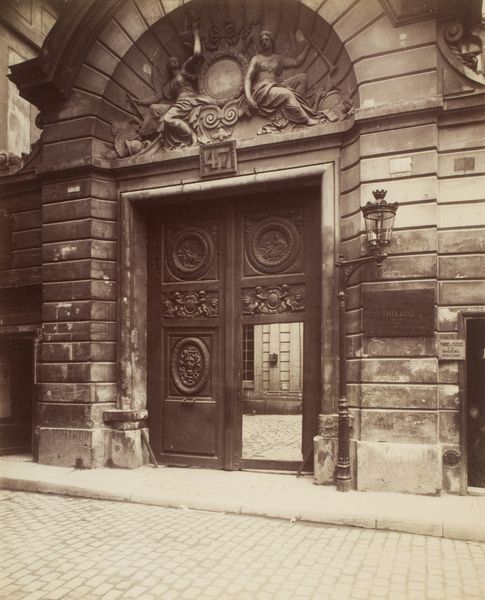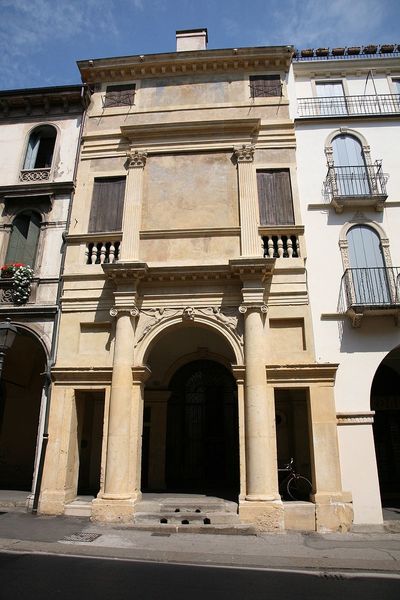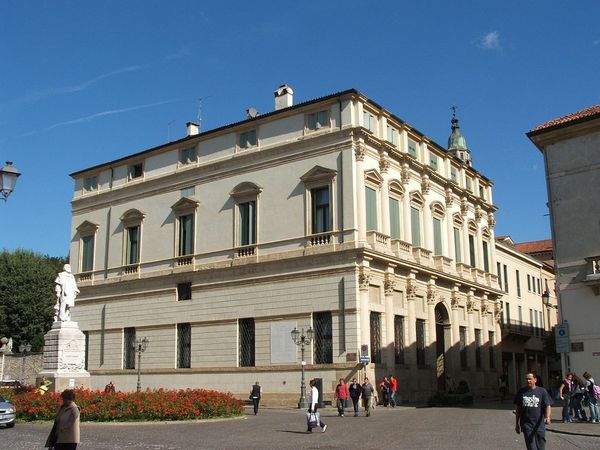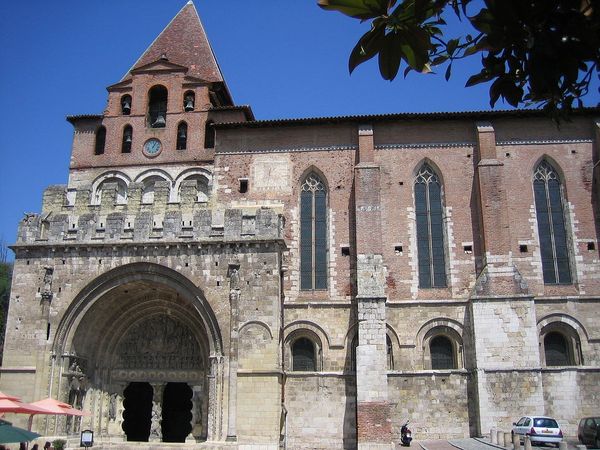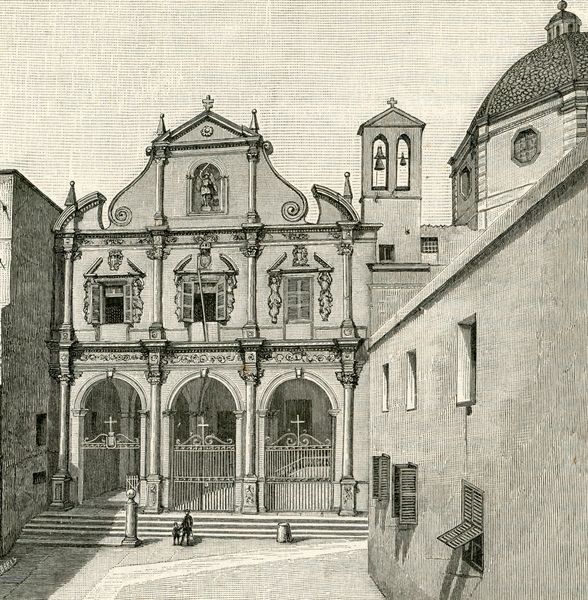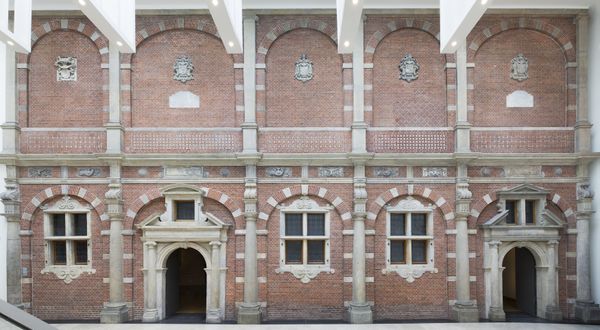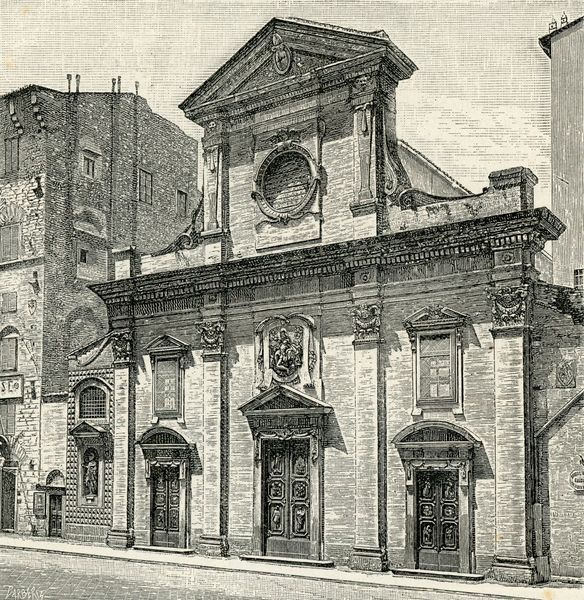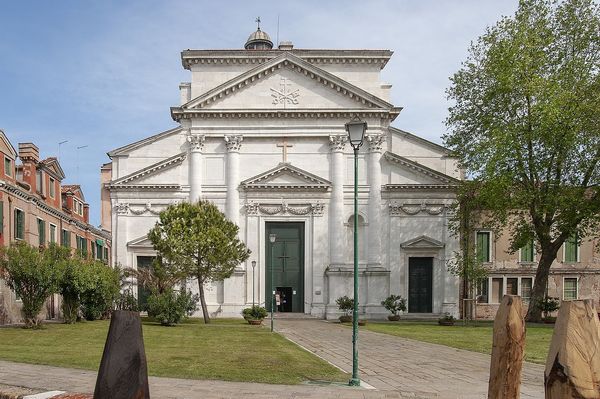
architecture
#
landscape
#
arch
#
cityscape
#
italian-renaissance
#
architecture
Copyright: Public domain
Curator: Standing here, you’re witnessing Donato Bramante's clever spatial illusion at Santa Maria presso San Satiro in Milan. Constructed around 1482, it is, in essence, an architectural sleight of hand. Editor: My first thought is confinement—the building seems strangely squeezed, a beautiful object struggling for space. But the craftsmanship is evident everywhere; what's the story behind this particular creation? Curator: Bramante was faced with an unusually restricted building site, unable to construct a proper apse behind the altar. So, instead, he conjured one using painted perspective—a trompe-l'oeil just 97 centimeters deep. He fashioned what seems like a vast, receding space using painted plaster and perspective tricks. Editor: Deception through materiality, right? It's about how Bramante uses the limitations of brick and plaster to fool the eye, almost taunting the viewer with its false depth. Think of the laborers involved, mixing plaster, crafting bricks, all contributing to this elaborate deception. The physical act of building clashes with the intellectual concept. Curator: Precisely! He transforms limitations into astonishing visual poetry. The illusion toys with your perceptions, urging you to question what’s real. In a way, it reminds us that faith itself requires a similar kind of visionary acceptance. The way our mind makes up for where logic has limitations to create something divine, like God. Editor: It is true that that type of mind bend has spiritual properties! Considering the economic support that was put in it as well as all the people that have gone through this area, you have a mix of human experience being presented as the architecture shifts as people come to see and engage with it. Curator: Thinking about it now, it's a beautiful and permanent paradox. We search for profundity in our lives, our environment. Then he makes an echo of searching within that small apse with his visual paradox. The way you discover how small your vision is until your vision of faith shows you otherwise, creating infinity where there seemed none. Editor: Agreed. Bramante offers us a challenge, prompting us to consider the interplay between illusion, reality, labor, and vision that architecture presents. It invites us to dwell and contemplate what faith and artistic creation are truly all about.
Comments
No comments
Be the first to comment and join the conversation on the ultimate creative platform.

